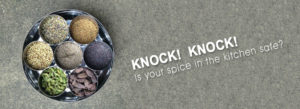
Read Time:2 Minute, 11 Second
The Green Revolution has spawned other sources of food contamination, through pesticides & agrichemicals. Modern food technology & food processing industries poses risk of food contamination by introducing chemicals as additives, preservatives, colouring agents etc with no nutritive value.
- Monosodium Glutamate (MSG): A frequently used additive that enhances food flavour. Some researches indicate MSG as an excito toxin that leads to excessive glutamate in the brain and excessive stimulation of nerve cells and neuron receptors.
- High-Fructose Corn Syrup: A common sweetener additive frequently found in soda, juice, candy. Rich in a type of simple sugar (fructose) it can cause serious health issues if consumed in high amounts. It can increase belly fat & blood sugar levels significantly.
- Carrageenan: A preservative used as a thickener; found in milk, ice cream, coffee creamers. Some researchers believe it can have an adverse impact on digestive health, associated with intestinal ulcers & colon cancer.
- Benzoates: A safe food additive used in processed foods & beverages to extend shelf life. However, it has been associated with hyperactivity disorder. Sodium benzoate when combined with ascorbic acid in carbonated soft drinks can form the potent carcinogen benzene.
- Nitrites: A common food additive with its colouring, antimicrobial and flavouring effects; found in several meat, fish & cheese products. Nitrite combines readily with secondary amines forming nitrosamines, some of which are carcinogenic.
- Sulphites: Widely used preservative & additive in baked food, sauces, dried fruits, snacks etc. Can induce a range of adverse clinical effects in sensitive people like dermatitis, urticaria, flushing, hypotension, abdominal pain and diarrhoea.
- Tartrazine: A very common yellow coloured azo food dye made from petroleum products, found in desserts, candies, soft drinks and condiments. Some adverse reactions include urticaria, angioedema (swelling of the lips, tongue, throat, and neck caused by the release of histamine in an allergic reaction), asthma etc.
- Erythrosine: An artificial red (cherry-pink) food colouring agent. It is found in candied cherries, candies, cookies, popsicles and cake decorating gels. This chemical can disintegrate and release iodide at high temperatures; may promote thyroid tumours.
- Dichloro Diphenyl Trichloroethane (DDT): A commonly used pesticide for insect control in agro or dairy farms. People can absorb this chemical by eating, breathing, or touching products contaminated with DDT. The metabolite of DDT is notorious leading to various health problems like increasing the risk of premature birth or low birth weight among children.
- Profenophos: A familiar insecticide used for crops & fruits; can have adverse impacts not only on the crop but also the farmers’ health. Profenofos can over-stimulate the nervous system causing nausea, dizziness, confusion, and at very high exposures can cause respiratory paralysis.





